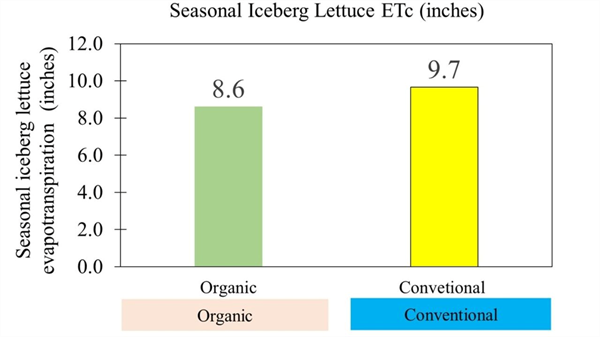Out in the field, water is life. Every drop counts, especially in places like the desert Southwest, where summers run hot and dry, and winters bring little or no rainfall. Many farmers are asking an important question: Does organic lettuce really use less water than conventional lettuce?
To answer that, it helps to start with the soil. Think of soil as a sponge. In conventional systems, synthetic fertilizers often deliver nutrients quickly, but over time the soil can lose some of its natural structure and ability to hold moisture. Organic systems, however, are built on compost, cover crops, and other organic matter. This added organic matter improves soil structure, making it spongier. A healthier soil sponge can soak up rainfall, hold on to moisture longer, and release it more slowly to plant roots.
Last fall, at the Yuma Ag Center in Yuma, AZ, we conducted a field trial to measure seasonal water use in organic and conventional lettuce.
The results were encouraging. On average, organic lettuce used about one inch less water over the season compared to conventional lettuce. At first, one inch might not sound like much. But in real farm terms, it could mean skipping an entire irrigation, saving a day of labor, fuel, or electricity for pumping, and wear on equipment. That’s a meaningful saving, especially during a season when every drop counts.
Even more, these results suggest that water savings could grow when paired with improved lettuce hybrids, more efficient irrigation systems, and season-based irrigation scheduling. Each small step adds up, and together they can help farmers stretch water resources further without sacrificing yield or quality.
So yes, organic lettuce does use less water, thanks to soils that make every drop count. And in an era of tighter water supplies, that efficiency might be one of the best tools growers have







